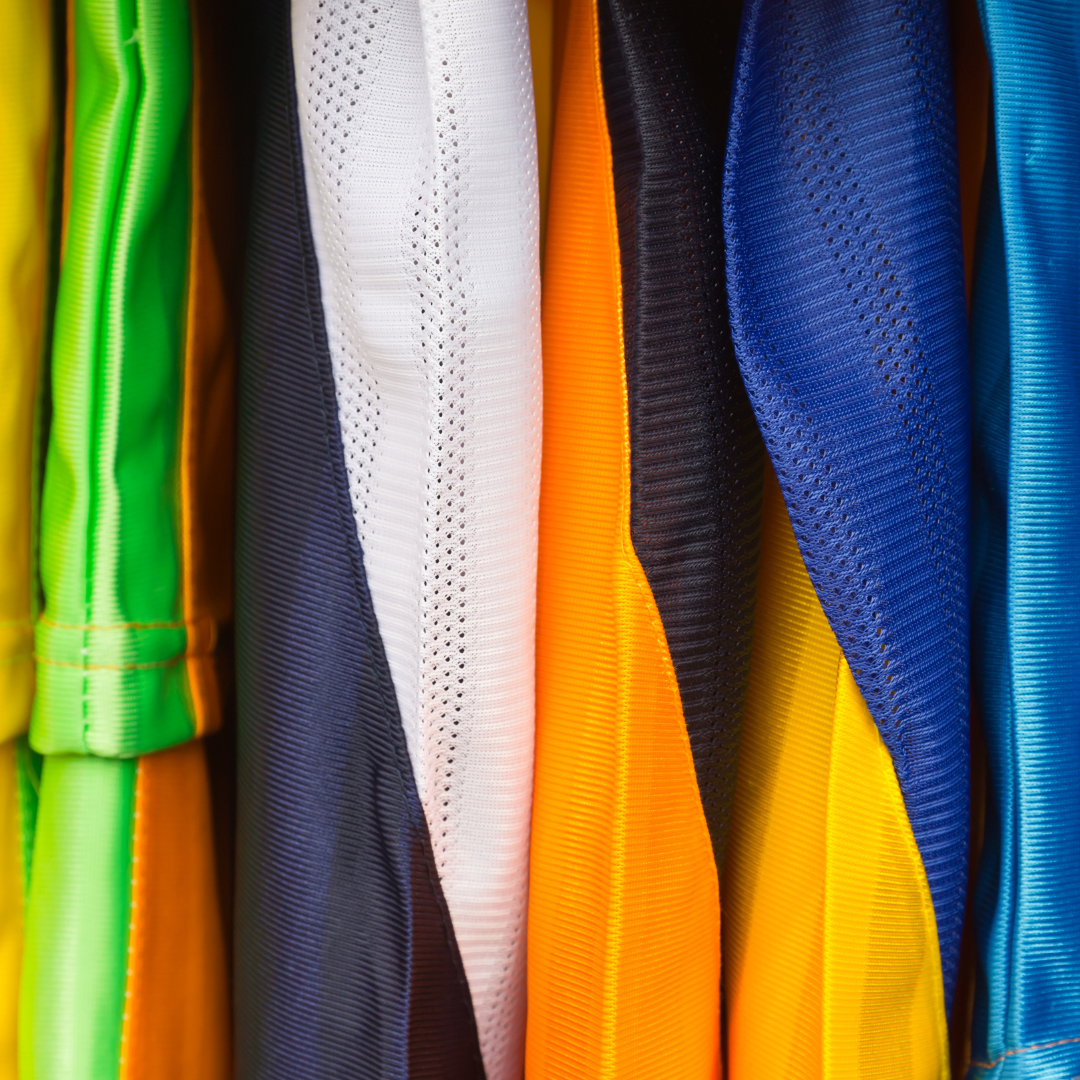We binge-watch, stream, scroll, and swipe, it’s part of daily life.
It’s no surprise that our relationship with swag has evolved. Merchandise is no longer just a reminder of an event, a brand, or a show—it’s a form of identity, a visual expression of the stories we connect with.
Merch, in many ways, is the natural byproduct of our content consumption. We crave a way to take our favorite stories, personalities, or brands beyond the screen and into the physical world.
But why do we feel this pull?
Let’s dive deep into why merch works so well, why it’s so enduring, and how it taps into our fundamental need to belong, communicate, and feel seen. Spoiler alert: It’s not just about owning a piece of the brand. It’s about owning a piece of the story.
1. From Content to Commodity - Stories Shape Our Desires
Content consumption is at an all-time high, whether it’s watching a docuseries, streaming a new album, or following a niche influencer. When we love something, our brains light up. Neurologically, this connection is often rooted in storytelling. Stories activate the brain in a way that facts alone cannot. They stimulate regions tied to sensory experiences, making the experience feel visceral, even personal.
This kind of immersive experience is often what sparks our desire to get closer to the content. We want to bring it into our world in a way that feels tangible. Enter merch. A t-shirt with a favorite character or a branded water bottle from a beloved podcast isn’t just merch; it’s a touchstone to a story we relate to, a message that resonates with us on a personal level. It’s as if we’re collecting symbols of stories that have become part of our lives.
In a sense, merch/swag is the bridge from passive consumption to active engagement. It allows us to interact with the story, wear it, use it, and ultimately make it a part of our own narrative.
2. The Psychology of Belonging - Why We Buy for Identity
A lot of merchandise today is designed with one primary goal: to signal identity. We’re wired to belong to groups; it’s a survival instinct as old as humanity itself. Sociologists have long studied how humans naturally seek out and signal their belonging to communities, which gives us a sense of safety and connection.
Think about it: when we wear a t-shirt with a niche quote from a popular show or a hoodie from a boutique band, we’re signaling something about ourselves to the world. We’re part of an “in-crowd,” even if it’s a digital or pop-culture one. Or, better yet, we are giving out a positive message that may make positive change. And this isn’t just conjecture—studies have shown that people are more likely to purchase items that make them feel like they belong to a group, especially a group that aligns with their values and interests.
Buying merch often has a deeper psychological purpose than just supporting the brand; it’s about identity formation. It’s about belonging to a community where we feel seen, heard, and valued. In the same way that a person might join a club or wear a team’s colors, buying merch shows an affiliation with something that feels like home.
3. Nostalgia and Sentimentality - Why We Feel Attached to the Objects
Sometimes the merch we buy is less about making a statement and more about nostalgia. Ever see someone walking around in a vintage band tee from a group they loved as a teenager? That’s merch doing what it does best—evoking a time, a feeling, a slice of life that still holds meaning. We see this especially with retro merch trends, which tap into our sentimental attachments to the past.
Our brains are wired to seek comfort in nostalgia. When we buy merchandise from a favorite show, band, or influencer, we’re often doing more than just purchasing an item; we’re investing in a memory, a moment that made us feel good. Merch is like a time capsule—each piece holds memories, emotions, and reminders of where we were when we first encountered that story.
Nostalgia is powerful because it’s deeply tied to our emotions. When brands create merchandise, they aren’t just selling products; they’re selling an emotional connection, a little piece of the past wrapped up in the present.
4. The Social Signaling of Merch - A Quiet Language of Belonging
Merch, whether consciously or not, serves as a form of nonverbal communication. It lets us express who we are, what we value, and the communities we align ourselves with—all without saying a word. This kind of social signaling is subtle yet profound.
Consider the quiet nod of acknowledgment between two people who recognize each other’s obscure band t-shirts. Or the quick connection two fans make over a branded tote from a niche podcast. There’s a shared understanding and appreciation that goes beyond mere consumerism. In a way, merch becomes a shorthand for people to connect over shared interests.
Social psychologist Henri Tajfel explored the concept of social identity theory, which posits that our identities are partially defined by the groups we belong to. Merchandise, then, isn’t just a personal souvenir; it’s an emblem of social identity. It’s a quiet declaration of, “This is who I am, and this is what I’m into.” And it gives us permission to find, connect with, and identify our kind of people.
5. Merch as a Status Symbol - The Rise of Limited Editions
In recent years, merch has shifted to become more than just branded material—it’s become a status symbol. Limited-edition drops, collabs with famous brands, and exclusive designs are part of an emerging trend that taps into our psychology of scarcity and desire.
Scarcity, in psychological terms, heightens value. The scarcer something is, the more we want it, and limited-edition merch plays right into this. A hoodie from a limited drop or a collectible pin from a once-in-a-lifetime event isn’t just merch—it’s a badge of exclusivity. It says, “I was there,” or, “I was part of this moment.” It becomes a symbol of having participated in something unique.
This scarcity principle drives fans to purchase quickly, as they fear missing out on something that might never come around again. And this isn’t just exclusive to mega-events or famous personalities. Even smaller, niche brands and influencers are starting to harness the power of limited-edition merch to create that feeling of exclusivity and community.
6. The Future of Merch - A Continuation of the Story
With the rise of interactive content—podcasts, video streams, live interactions with influencers—the line between content creation and merchandising continues to blur. Today’s audience doesn’t just passively watch or listen; they want to participate in the experience, and merch provides a medium for that engagement.
For the future, we can expect merch to become even more entwined with content. Augmented reality, limited-edition digital items, and personalized, hyper-targeted products are likely the next frontier. As technology advances, merch might not just be a shirt or mug—it could be a whole new way of experiencing the stories we love.
In this evolving landscape, merch is more than a souvenir—it’s the inevitable byproduct of content that people genuinely care about. As long as people crave belonging, identity, and meaning, merch will remain a vital extension of content consumption.
Merch is a Cultural Mirror
So, what does this mean for the swag industry? For one, it means thinking beyond simple branding. Today’s customers want merch that connects them to something bigger—a story, a memory, a community. It’s about adding value, crafting meaning, and creating a sense of belonging.
When we view merch not just as a product but as an extension of content, we start to see it for what it truly is: a mirror of culture, a symbol of belonging, and a deeply personal statement.
Merch, ultimately, is the story we tell ourselves about the content we love. And as content continues to shape our lives, our interests, and our identities, the need for merch will only grow. The challenge now is to create pieces that resonate with today’s culture-driven, story-obsessed consumers, capturing the moments, emotions, and connections they treasure most. Because in the end, merch isn’t just a byproduct of content—it’s a part of the journey itself.



